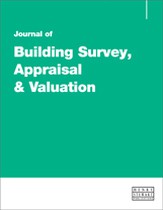Making development deliverable: Overcoming the hurdles of s.106 obligations and the Community Infrastructure Levy
Abstract
The current housing crisis will only be solved if we build more houses, but the delivery of development rests upon its viability. Planning policy requirements are commonly viewed as a key area for discussion and the area in which developers look for the greatest ‘give’ on the part of local authorities. However, in the climate of public spending cuts, development is often being relied upon to fund infrastructure that has traditionally been paid for by the public sector. Against this context, this paper explores some of the key issues arising from planning policy requirements — Community Infrastructure Levy (CIL) and s.106 obligations. It explains the likely impact of recent policy changes including restrictions upon the pooling of contributions, the ‘vacant building credit’, and the size threshold for the requirement of affordable housing. It provides examples of recent appeal decisions and High Court judgments and provides practical solutions to help navigate the increasingly complex topics of CIL and s.106 obligations.
The full article is available to subscribers to the journal.
Citation
Coop, Simon (2015, October 1). Making development deliverable: Overcoming the hurdles of s.106 obligations and the Community Infrastructure Levy. In the Journal of Building Survey, Appraisal & Valuation, Volume 4, Issue 2. https://doi.org/10.69554/QQZJ8545.Publications LLP
